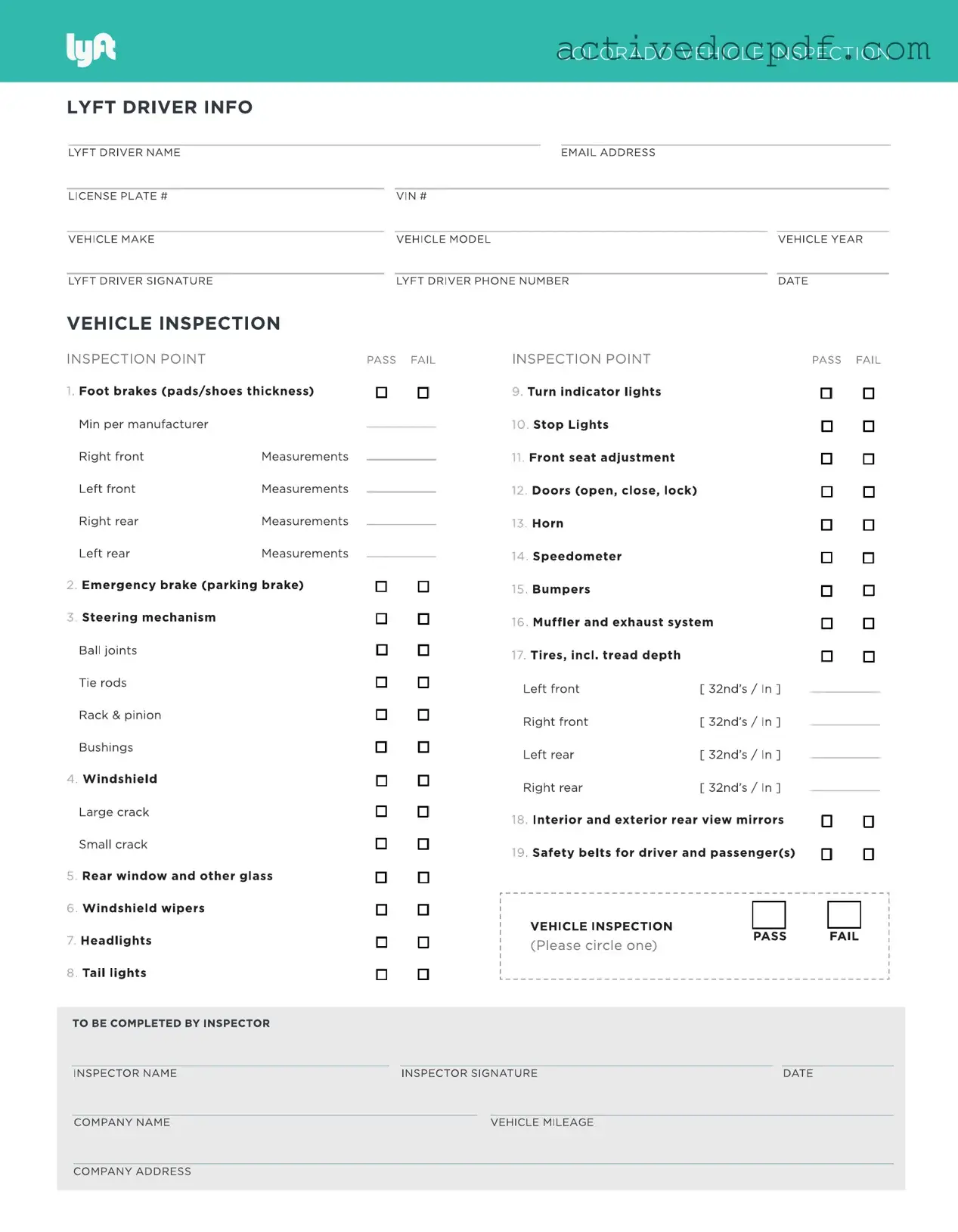The Lyft Inspection form is a document that drivers must complete to ensure their vehicle meets the safety and operational standards set by Lyft. This form is essential for maintaining a safe environment for both drivers and passengers.
Completing the Lyft Inspection form is crucial for several reasons:
-
It verifies that your vehicle is safe and roadworthy.
-
It helps maintain the quality of service provided to passengers.
-
It is a requirement for drivers to remain active on the Lyft platform.
Drivers are required to submit the Lyft Inspection form annually. Regular inspections help ensure that your vehicle remains in good condition and complies with Lyft’s safety standards throughout the year.
You can obtain the Lyft Inspection form directly from the Lyft driver app or the Lyft website. Look for the section dedicated to vehicle requirements or inspections, where you will find the necessary documentation.
What should I do if my vehicle fails the inspection?
If your vehicle fails the inspection, you will need to address the issues identified during the inspection. Once repairs are made, you can re-submit the inspection form for approval. It’s important to ensure that all required repairs are completed before attempting to drive for Lyft again.
No, Lyft requires drivers to use its specific inspection form. Using a different form may lead to delays in processing your vehicle's approval and could affect your ability to drive for Lyft.
After submission, Lyft will review the inspection form and any accompanying documentation. If everything is in order, your vehicle will be approved for use on the platform. You will receive a notification regarding the status of your inspection.
Is there a fee for the vehicle inspection?
Yes, there may be a fee associated with having your vehicle inspected, depending on the location and the service provider you choose. Some mechanics or inspection stations may charge a flat fee for the inspection service.
The inspection must be conducted by a certified mechanic or an authorized inspection station. Lyft provides a list of approved locations, but drivers can also choose a trusted mechanic, as long as they meet Lyft's inspection criteria.
What are the key components checked during the inspection?
The inspection typically covers several key components, including:
-
Tires and brakes
-
Lights and signals
-
Windshield and wipers
-
Seat belts
-
Steering and suspension
Ensuring these components are in good condition is vital for safe driving and compliance with Lyft’s standards.
